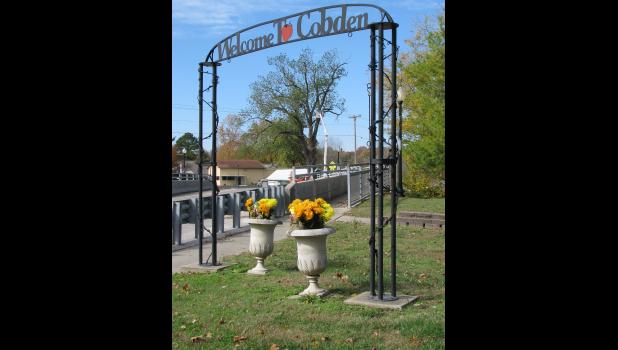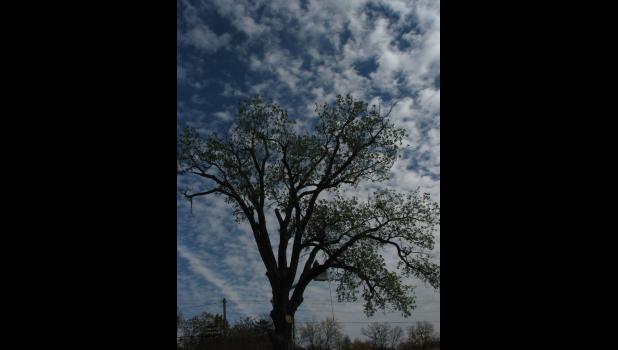Please read this...But only God can make a tree...
Change can be ever so subtle. Or, ever so dramatic. A bit of a dramatic change in the landscape in my hometown unfolded during the past week or so.
The change involved a tree. Specifically, a cottonwood tree. The tree had stood tall for many years at the corner of North Appleknocker Drive and old U.S. Route 51, not far from a bridge which carries the highway over the Canadian National railroad track line below.
Thanks to the internet and a book we have at home, I was able to find some information about cottonwood trees. To be honest with you, I really had not given much thought about cottonwood trees until I sat down to create this week's colyum.
The book is the eighth edition of "Forest Trees of Illinois," which was written by Robert H. Mohlenbrock of the Southern Illinois University Department of Botany. The author's name may be familiar to some readers.
A copy of the book was shared with yours truly a number of years ago by a fellow traveler on The Journey Through Life whose career involved a bit of work in the woods.
"Forest Trees of Illinois" shares that the cottonwood, or eastern cottonwood, has a Latin, or scientific, name of "Populus deltoides." But you already knew that. Right.
The book explains that the cottonwood is a large, rapidly growing tree, which can touch the sky at a height of 100 feet. A cottonwood tree growing in Grundy County was measured at having a circumference of 28 feet, 6 inches. Goodness, that would be a really big tree.
Information posted on the website for Lake Forest College (a school located near Chicago) shared that eastern cottonwoods "typically live 70 to 100 years, but they have the potential to live 200 to 400 years if they have a good growing environment."
Recently, misfortune literally struck the cottonwood tree in Cobden, in the form of a bolt of lightning. A large limb fell out of the tree. And, as it turned out, the tree apparently had reached the end of its own lifespan. The cottonwood was dying.
ALL Tree Service of Cobden came to cut down the cottonwood. The folks with the tree service estimated that the cottonwood was about 70 feet tall, and that it might have been about 150 years old.
My math skills aren't the greatest, but with the help of a calculator, I was able to determine that the Cobden cottonwood might have started growing in 1867. The key word here is "might." As far as I know, there aren't any birth certificates for trees. There might be, though.
Also making their appearance in 1867, as listed on famousbirthdays.com, were "Little House on the Prairie" author Laura Ingalls Wilder, physicist Marie Curie, airplane inventor Wilbur Wright, architect Frank Lloyd Wright, baseball player Cy Young (who has an award named in his honor) and Margaret Brown.
What. Say you've never heard of Margaret Brown? How 'bout Molly Brown. As in "unsinkable" Molly Brown. She survived the sinking of the Titanic, and I'm guessing she might have been happy to get a chance to see a cottonwood tree.
Andrew Johnson was president of the United States in 1867. I don't know if the first President Johnson gave much thought to cottownwood trees. He had more important things to worry about.
There's no telling how many hundreds of people, including school children, walked past that cottonwood tree over the years. The tree was growing along a sidewalk which many children use as they walk to, and from, school. A crossing guard helps the children on the way.
Since yours truly started walking on a regular basis, I've been one of the people who has walked past the tree on a regular basis. It's always been one of the first trees to show that summer was about to give way to autumn.
But, as happens with all living things, the time comes to just take one last breath, or, maybe in the case of the cottonwood tree, to let one last leaf fall.
Last Saturday afternoon, I walked past the tree once again. Well, what was left of the tree. A rather tall stump. And, I'm guessing, lots of memories.
Joyce Kilmer wrote a poem which does a much better job of expressing thoughts about the wonders of trees:
I think that I shall never see
A poem lovely as a tree.
A tree whose hungry mouth is prest
Against the sweet earth’s flowing breast;
A tree that looks at God all day,
And lifts her leafy arms to pray;
A tree that may in summer wear
A nest of robins in her hair;
Upon whose bosom snow has lain;
Who intimately lives with rain.
Poems are made by fools like me,
But only God can make a tree.


